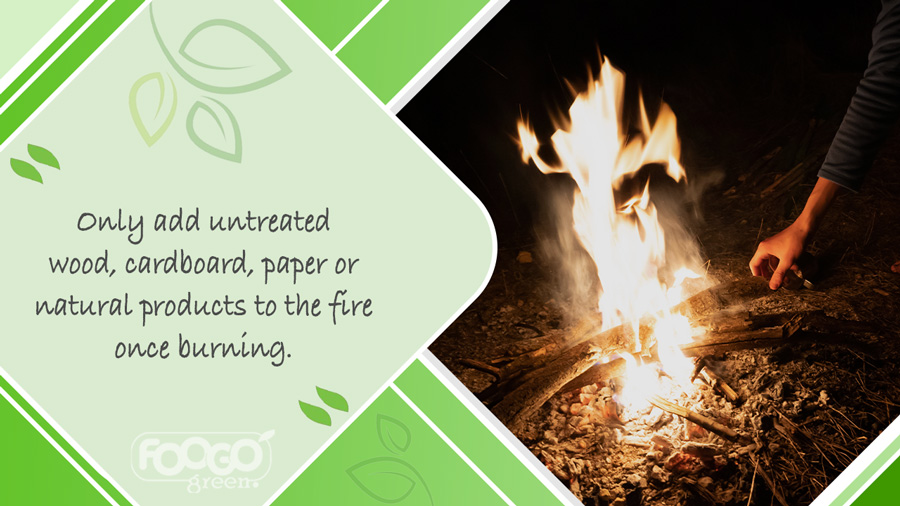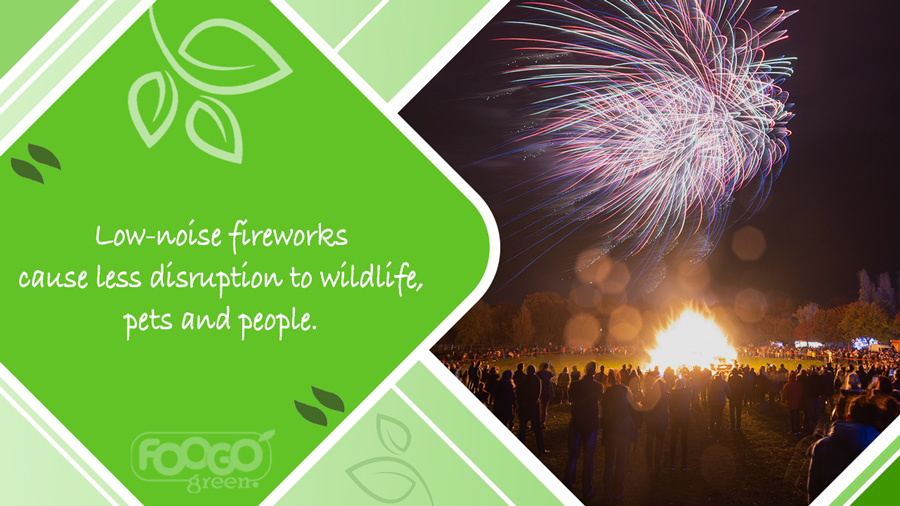Make your Bonfire Night eco-friendly
1st Nov 2021
Recent scientific studies have found that air pollution levels increase to harmful levels on Bonfire Night. While bonfires may never be completely eco-friendly, there are ways to reduce their impact on the environment.
Making an eco-friendly bonfire
Collect your own firewood
Firewood sold in shops may be treated with chemicals or harvested unsustainably. Collect your own when pruning in the garden, or while out and about in wooded areas. Be sure to gather fallen branches and sticks – don’t remove them from trees.
If you have unfixable broken wooden furniture that isn’t treated with dangerous chemicals or paint, this can be dismantled for firewood rather than going to landfill.

Preparing the site of the fire
Choose somewhere safe, away from adjacent flammable materials, and clear the ground. Encircle the zone with large stones to contain the flames and reduce the area damaged by burning.
If the bonfire is not being prepared on your own land, make sure you obtain the relevant permission. Bear in mind there may be pre-existing conditions you are unaware of, such as fertilisers in the ground or protected flora and fauna.
A bonfire in the middle of a dry field has the potential to spread, resulting in widespread destruction to wildlife. Always plan for the safety of your guests and the environment.
Keep it natural
Use twigs, used paper and cardboard as kindling to get the fire going. You should avoid chemical accelerants to reduce both air and ground pollution.
Only add untreated wood, cardboard, paper, or natural products to the fire once it has taken.
For carbon-rich matter that’s great for gardening, collect the ashes from the fire the once they have completely cooled and add them to compost.
Check bonfires for hibernating animals
A dense pile of sticks is an open invitation to small creatures such as hedgehogs and dormice who hibernate in sheltered spots.
Thoroughly check for sleeping animals before lighting the bonfire. Carefully dismantle and move the bonfire if you find any. To minimise the chances of accidently attracting small mammals to the site, set the bonfire up the same day it will be lit.

Environmentally friendly fireworks
While lovely to look at in the air, the environmental impact of fireworks isn’t so wonderful. Ordinary fireworks contain heavy metals and other toxic components to create colours. These are released into the atmosphere, along with other pollutants.
If purchasing for large displays, use eco-friendly fireworks or choose white ones with fewer chemicals. Low-noise fireworks cause less disruption to wildlife, pets, and people.
Organise a sweep of the area after the display to collect litter and safely dispose of any unexploded fireworks. Douse these with water and seal tightly before discarding.
Minimising your impact
It’s best to attend larger, community events than host your own small gatherings. Multiple small events create more litter and air pollution than one group celebration. Larger events will also have a bigger budget to invest in sustainability.
Sustainable Bonfire Night extras
Sustainable blankets
Blankets make bonfires especially cosy, but many are made from plastic fibres. On top of being flammable or prone to melting, these fibres shed microplastics through friction and when washed.
Encourage attendees to bring their own, and provide blankets made from natural fibres such as wool or cotton which do not use harmful chemicals or unethical practices in their manufacture. You could even arrange for the collection and donation of old used blankets to pet shelters.
Biodegradable sky lanterns
There’s no sustainable way to let a flame encased in paper and wire loose into the sky. Though lanterns may be pretty to watch, they’ve been known to cause wildfires and end up as litter. ‘Biodegradable’ lanterns still have wire structures which harm animals and wildlife.

Food and drink
Catering for an event like a fireworks party doesn’t have to be wasteful . Doing it yourself ensures freshness and reduces packaging waste.
Warming winter drinks
From warm spiced wine, cider or apple juice to hot chocolate and turmeric lattes, seasonal beverages warm chilly fingers and scent the evening air.
You could serve your guests from large reusable pans to reduce waste and use local suppliers to reduce food miles.
At smaller gatherings, serve hot drinks in mugs that can be collected and reused, or compostable packaging at larger events.
Setting up adequate litter, recycling and compost bins will help optimise waste management.
Reusable bamboo straws are the ideal eco-friendly solution for quaffing hot and cold beverages in all weather conditions.
Bonfire Night treats
It wouldn’t be Guy Fawkes Night without toffee apples. Ask local growers if they can supply apples, and make your own toffee instead of buying it.
Use reusable metal skewers or source wooden ones, which can go into the fire when they’re no longer needed. You can reuse wooden skewers for toasting marshmallows before discarding them.
Compostable catering
However you choose to cater for your guests, palm leaf and bagasse tableware makes for the perfect serving solution.
Fully home compostable and 100% natural, palm leaf trays are elegant and simple , befitting an autumnal bonfire feast.
Disposable palm plates and platters are also microwave and freezer safe – so you can save leftovers and reduce food waste.
Environmentally friendly chemical-free sustainable cutlery is also safe to dispose of in a bonfire.
Visit our online store to see the full range of compostable and biodegradable partyware we have to offer . In addition to individual packs, we also offer bulk and wholesale options to cater for large events or frequent use.

